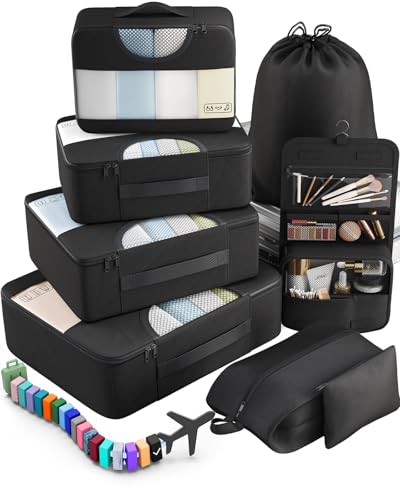In Mauritius, they use Type C and G power plugs and outlets. The voltage is 230V, and the frequency is 50Hz.
So, you’ll need a travel adapter in Mauritius. Their plugs and outlets are different from the Type A and B ones we use back in the States.
Quick Overview of the Plugs in Mauritius:
- Plug type in Mauritius: C and G
- Standard voltage: 230V
- Frequency: 50Hz
- Need a travel adapter? Yes, you do need a travel adapter
- Need a voltage converter? Could be necessary for select devices
- Recommended plug adapter: Vintar Universal Travel Adapter Kit
All details on this page are sourced from official power regulations, international standards like the IEC, and up-to-date feedback from travelers who’ve been there.
The Only Travel Adapter You’ll Need in Mauritius
A cheap, unreliable travel adapter can overheat, fry your devices, or stop working mid-trip—and no one wants that. We don’t sell them, but we’ve done serious research to find the safest and most reliable option for Mauritius. Tested for compatibility, durability, and charging speed, this one won’t let you down:
Recommended Travel Plug Adapter
by 1,000+ travelers on Amazon
If you’re already traveling and don’t have one, you can usually snag something locally.
But hey, for your next trip, throw one in your bag before you leave—you’ll save yourself the scavenger hunt later.
People visiting Mauritius often continue their route through Madagascar, South Africa, and Réunion. Always check which plugs you’ll need.
Power Outlets in Mauritius
In Mauritius, they use Type C and G power plugs and outlets.
Type C

Type C outlets have two round prongs and no grounding pin. Type E and F plugs usually fit too, but grounded plugs will need an adapter.
Type G

Type G outlets have three rectangular prongs in a triangular layout and built-in fuses. Other plug types won’t fit without an adapter.
Do You Need a Voltage Converter?
Since the voltage in Mauritius doesn’t match the U.S. standard of 120V, you’ll likely need a voltage converter to avoid damaging your devices.
Before plugging in any device abroad, always make sure to check the power input label. If it states “100-240V, 50/60 Hz”, your device is designed to work on multiple voltages and won’t need a converter. Many modern electronics, including phones, tablets, and rechargeable items, have this feature.

Which Travel Devices May Need a Converter?
Want peace of mind while traveling? These top-rated voltage converters are a safe bet.
| Device | Need Converter? | Notes |
|---|---|---|
| Phone | ❌ No (usually) | Most modern phone chargers are dual voltage (100–240V) |
| Laptop | ❌ No (usually) | Check the power brick label for 100–240V |
| Hairdryer | ✅ Yes (often) | High wattage; many models are not dual voltage |
| Electric toothbrush | ⚠️ Check voltage | Some models are 110V only |
| Camera / DSLR | ❌ No (usually) | Most chargers are dual voltage |
| Power bank | ❌ No | Charges via USB, adapter is enough |
| Electric shaver / trimmer | ⚠️ Check voltage | Older or cheaper models may not support 230V |
| Tablet / iPad | ❌ No | All models are dual voltage |
| Portable fan | ✅ Yes (sometimes) | Many models are not compatible with 230V |
| Game console | ⚠️ Check voltage | Newer consoles like PS5 and Xbox are often dual voltage — check to be sure |
| Bluetooth speaker | ❌ No (usually) | Charges via USB |
| E-reader (Kindle, etc.) | ❌ No | USB charging only, no converter needed |
Top Travel Essentials to Pack
With a few key extras, you can avoid a lot of small travel problems. These essentials are smart to bring along.
Digital Luggage Scale
Packing Cubes
Power Bank
More About Mauritius
Mauritius is a volcanic island roughly the size of Rhode Island, born about eight million years ago, with no standing army and a reputation for being one of Africa’s safest spots. It blends Indian Ocean beaches with hills, waterfalls, and parks—like Black River Gorges and the famous Pamplemousses Botanical Garden, home to giant lily pads and exotic palms.
The island’s multicultural heritage shines in its food: expect a Creole-Indian-Chinese-European mash-up on your plate and in lively street markets. Beyond sightseeing, you can swim with dolphins, hike in nature reserves, tour colonial sugarcane estates, or sample Mauritian rum and palm-heart “caviar.”
It’s easy to explore thanks to ferry exits and the Metro Express linking Port Louis to the central plateau. From beach resorts to wildlife cruises, helicopter rides, and UNESCO sites like Le Morne Brabant, Mauritius offers a once-in-a-lifetime blend of relaxation, culture, and adventure.
Top places to visit in Mauritius: Port Louis, Grand Baie, and Flic-en-Flac.




